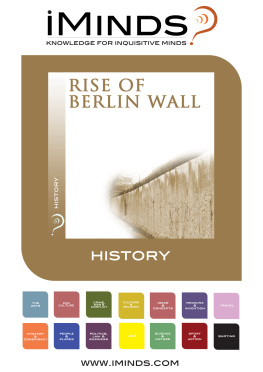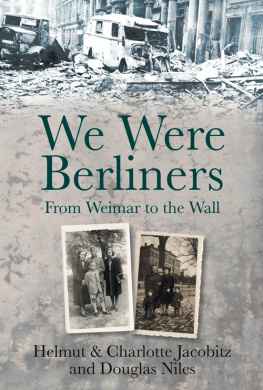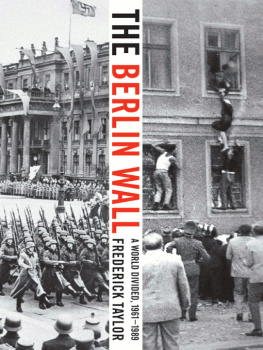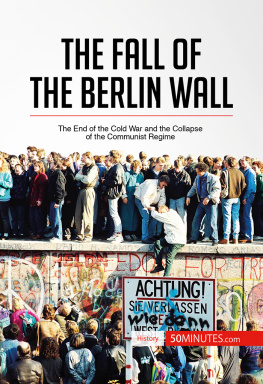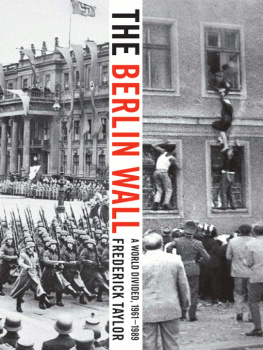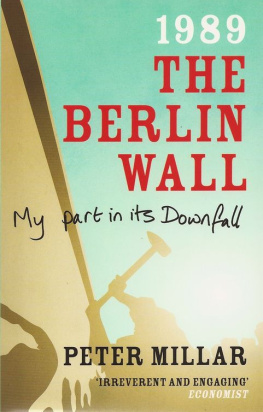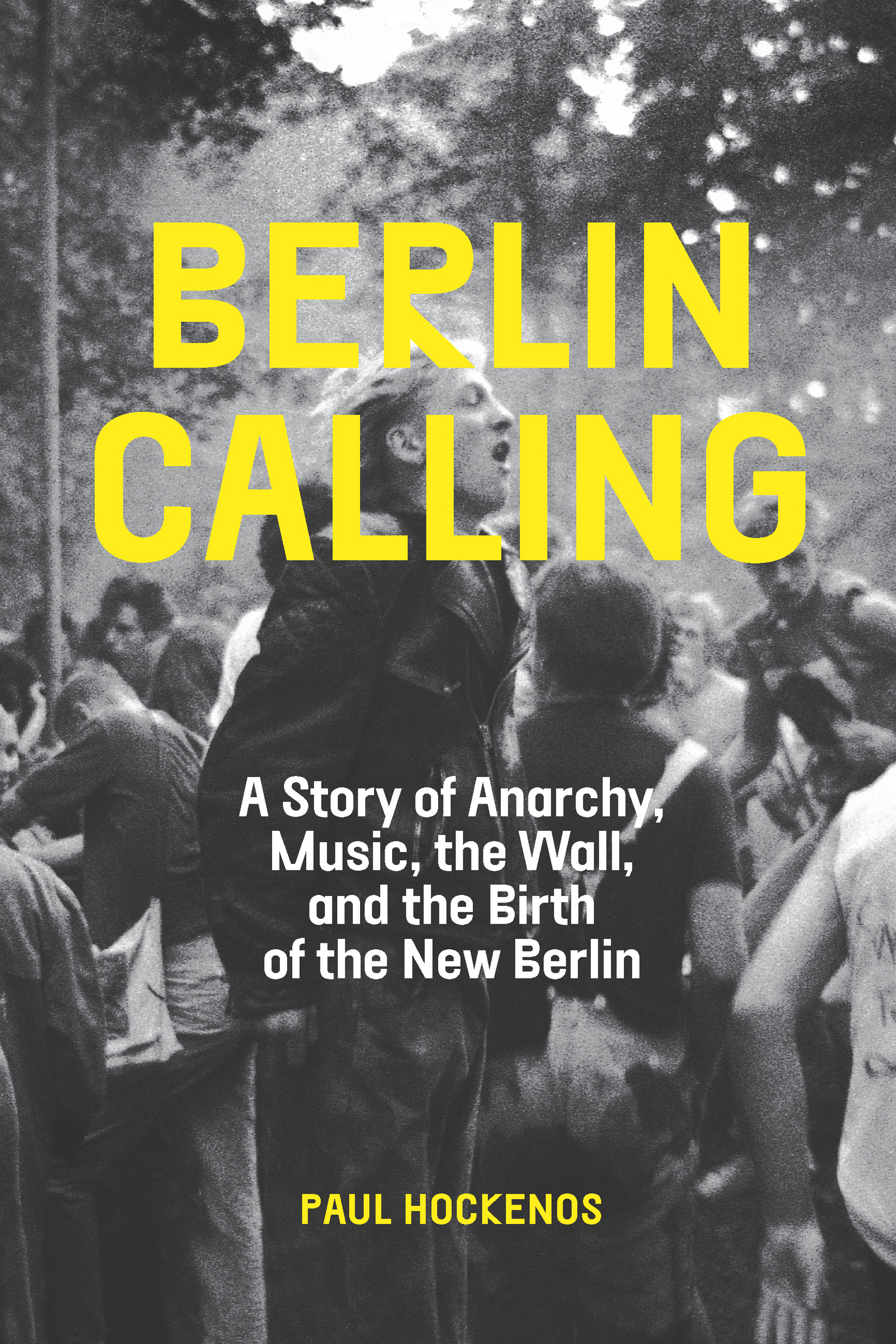

2017 by Paul Hockenos
All rights reserved.
No part of this book may be reproduced, in any form, without written permission from the publisher.
Requests for permission to reproduce selections from this book should be mailed to: Permissions Department, The New Press, 120 Wall Street, 31st floor, New York, NY 10005.
Published in the United States by The New Press, New York, 2017
Distributed by Perseus Distribution
LIBRARY OF CONGRESS CATALOGING-IN-PUBLICATION DATA
Names: Hockenos, Paul, 1963- author.
Title: Berlin calling: a story of anarchy, music, the Wall, and the birth of the new Berlin / Paul Hockenos.
Description: New York: The New Press, 2017. | Includes bibliographical references and index.
Identifiers: LCCN 2016052402 (print) | LCCN 2016055590 (ebook) | ISBN 9781620971963 (e-book)
Subjects: LCSH: Berlin (Germany)History1990- | Berlin (Germany)Social life and customs20th century. | Berlin (Germany)Social conditions20th century. | City and town lifeGermanyBerlinHistory20th century. | Berlin Wall, Berlin, Germany, 1961-1989. | Social changeGermanyBerlinHistory20th century. | Post-communismGermanyBerlinHistory20th century. | Political cultureGermanyBerlinHistory20th century. | Popular musicGermanyBerlinHistory20th century. | Popular cultureGermanyBerlinHistory20th century. | BISAC: HISTORY / Europe / Eastern. | ART / Art & Politics. | MUSIC / Genres & Styles / Punk. | POLITICAL SCIENCE / Political Ideologies / Communism & Socialism. Classification: LCC DD881.3 .H63 2017 (print) | LCC DD881.3 (ebook) | DDC 943/.1550881dc23
LC record available at https://lccn.loc.gov/2016052402
The New Press publishes books that promote and enrich public discussion and understanding of the issues vital to our democracy and to a more equitable world. These books are made possible by the enthusiasm of our readers; the support of a committed group of donors, large and small; the collaboration of our many partners in the independent media and the not-for-profit sector; booksellers, who often hand-sell New Press books; librarians; and above all by our authors.
www.thenewpress.com
Book design and composition by Lovedog Studio
This book was set in Walbaum MT
Printed in the United States of America
10 9 8 7 6 5 4 3 2 1
To Johan
Contents
Table of Contents
Guide
The Berlin experience is how to make a lot out of nothing.
DIMITRI HEGEMANN, BERLIN CLUB OWNER

I wrote the bulk of this book in 2015 and 2016 from my office in Prenzlauer Berg on Berlins east side, the site of many of the stories I narrate. This chronicle parallels my own journey since the 1980s, but is not limited to it. I write about the episodes that took place in Berlin when I lived there in part through my own experiences; for events or time periods that I didnt witness firsthand, Ive relied on interview partners, some of whom Ive known for years, such as Claudia Diedenhoven and Richard Wagner, and then others such as Danielle de Picciotto, Harald Hauswald, Swanhild Maass, and Wolfgang Mller, whom I met in the process of my research. I conducted all of the interviews myself, unless otherwise indicated and sourced, traveling by bicycle to cafs, pubs, and studios to meet my interlocutorseven in the dead of winter, as many Berliners do. Most of the books protagonists still live in the neighborhoods that I write about, amid the many newcomers, a testament to the fact that as much as Berlin changes, some things remain the same.
Thematically, Im indebted to music critic Greil Marcus, whose Lipstick Traces: A Secret History of the 20th Century called our attention to the many subaltern currents that flow through our cultures and subcultures. Also, while writing, I thought often of my former professor at the University of Sussex, the late Gillian Rose, whose teachings remain with me despite her early departure from this world. And over my other shoulder, as always, was the encouraging spirit of my father Warren, who was always deeply committed to all of his sons endeavors.
I thank all of the more than one hundred people I interviewed, including those not named in the book. I also thank Bill Martin, Karen Margolis, Gwen Jones, Jasper Tilbury, Hayyan Al-Yousouf, Colin Shepherd, Joshua Hammer, Rdiger Rossig, Deborah Chasman of the Boston Review, Erhard Stlting, Randy Kaufman, Mark Swatek-Evenstein, Heinz Havemeister, Matthew Hockenos, Rachel Tausendfreund, Bernd-Rainer Barth, Robert Van Meter, Jim Ogier, Dirk Moldt, Caf Anita Wronski, Lothar Schmid of worldwidefotos, and Felix Denk for their suggestions and support. Anne Crookall Hockenos read every page, still a meticulous copy editor twenty years after leaving the profession. My deep gratitude goes to my old friend Joe Sacco for the Berlin map. My agent Cecelia A. Cancellaro of Word Literary is a magnificent anomaly in the world of commercial publishing: always encouraging and motivated by her love of books. I also want to say thank you and good-bye to Christian Semler, one of my favorite Gesprchspartner, who died in 2015. And, not least, I thank my wife Jenni Winterhagen for her unstinting support and love. One day, our son Johan will read this book, I hope, and learn a little more about his father and much more about the city he was born and raised in. Lastly, Im grateful to my editor, Marc Favreau of The New Press, for his hard work and commitment to the project.

At the height of the Cold War, West Berlin was as far as one could travel east without leaving the Western world. The stranded city lay like an island in the middle of communist East Germany, detached from West Germany and circumscribed by the Berlin Wall. This enforced seclusion made West Berlin a sanctuary for contrarians looking to lose themselves, to search and reinvent. By the 1980s, stories of its all-night clubs, loose morals, and occupied tenements, known as squats, had leaked out through the militarized borders. On U.S. television news, I had seen the riotous street fighting between squatters and police in a haze of tear gas. Rolling Stone effused about the industrial sounds of the Berlin band Einstrzende Neubauten. And David Bowie and Iggy Pop attributed their most inspired work to the crucible of West Berlin, their home in the late 1970s.
Berlins staggering contradictions only made the divided city all the more beguiling. West Berlin was reputed to be the Wests showcase of capitalism, a glittering ornament to dangle in the face of the poor East bloc. Behind the Cold Wars front lines, West Berlin lay like a sore in the heart of Soviet-run Eastern Europe, a far-flung outpost occupied by World War IIs Western allies. Thus, simply by living in West Berlin one was manning the barricades of the Atlantic alliance. And yet, by the 1960s West Berlin had become a hotbed of radical critique whose partisans mocked West Germanys subservience to Washington. An antidote to tradition-girded Germany, the walled-off half city buzzed with subversive energy. Gay people, covetous of its thick cloak of anonymity, flocked to West Berlin, as did free thinkers of many stripes. Hundreds of squats and collectives functioned as open-ended experiments in direct democracy and alternative lifestyles.


